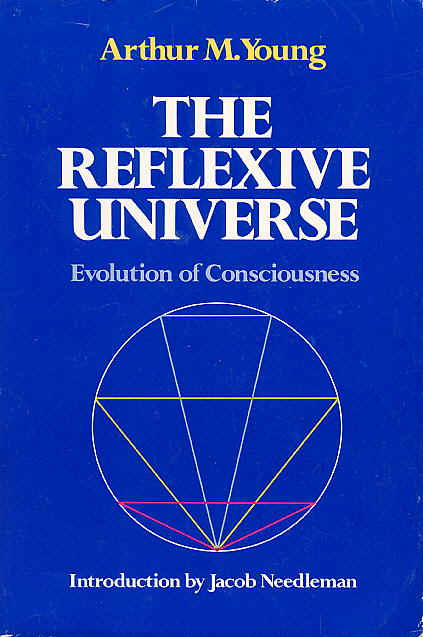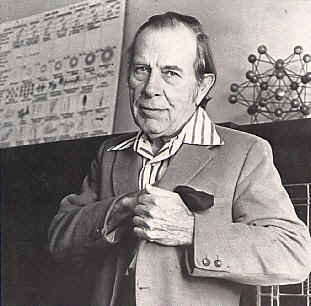Introduction
It has become customary to express one's appreciation of a bold and original thinker by saying that his work defies classification. Arthur M. Young's writings are, however, quite readily classified and are no less original for all that. He belongs to that small class of modern men and women who attempt to think for themselves and to look at nature with their own eyes. This enterprise is part of a great and ancient tradition of the human race.
My intention here is neither to extol nor to criticize Arthur Young's ideas as such. What I wish to speak of is rather this whole question of looking with one's own eyes, an ideal that not only lies at the root of modern science but forms the foundation of all real philosophy, religion, and art through the ages. It is a very difficult enterprise and in our culture is far more esteemed in word than in deed.
Young is a scientist and a metaphysician. Like an increasing number of scientifically trained men and women in our society, he seeks to correct the imbalance that science has introduced into our lives through its denial of approaches to knowledge that rely on sources other than the evidence of the senses. Through this denial, science has reduced itself to scientism, and in reaction to this there has now appeared in our culture a strong current of interest in religious, mystical, and esoteric ideas about man and nature. As his book The Bell Notes indicates. Young entered this current at a time when it was hardly more than a rivulet. In these notes, which date from 1945 to 1947, when he was struggling to perfect his invention of the Bell helicopter, Young writes:
"What is our scientific civilization? Nothing? No, it is a very impressive something, but this something is really not what we thought it was. . .Once upon a time there was magic. Civilization learned to reproduce, reduce to a formula, and duplicate a part of this magic. That is our world of science. The rest of the magic has been tossed on the junk heap. We are now scratching around trying to piece it together again."
Young writes of the world that modern science has revealed with much the same attitude that one finds in the great naturalists of the eighteenth and nineteenth centuries. He marvels as well as explains, a gift that the modern scientist is losing in the thicket of government funding and computer printouts, and the avalanche of mediocre, tedious, and sometimes even fraudulent research. Like the great naturalists. Young also marvels at his own feelings toward nature and seems to understand that these special feelings associated with the search for meaning are perhaps the single most important cognitive instrument of the true scientist.
His books invite us into a sacred universe. It is here that his work deserves to be measured against the achievements of the great metaphysicians of the pre-modern era. Strange as it may sound to the contemporary positivist philosopher, the fact is that the major metaphysical teachings of the ancient world were all founded on experience. Not the outer, external experience of the modem scientist, but the equally rigorous internal experience of the authentic contemplative.
There once existed a way of knowing that can be called inner empiricism. Through awareness of the movements and energies within the human microcosm, the great metaphysicians of the past were able to formulate ideas about the macrocosm - nature in all its universal vastness - that answered the need of the human mind not only for knowledge, but for meaning. When the contemplative, experiential aspect of metaphysics was lost and forgotten in the modem era, metaphysics degenerated into mere speculation, without roots in the world of hard inner facts. As such, it was deservedly castigated by the principal modern philosophers, such as Hume, Kant, and Wittgenstein.
In Arthur Young's work, however, we see a pioneering modern attempt to reclaim the world of inner facts as a world of equal reality to the world of outer facts. His work resoundingly echoes with the rediscovery of ancient truths - alchemical symbols, spiritual mathematics, the great hierarchical chain of consciousness and purpose - while remaining faithful to the latest theories and discoveries of modern science. He respects the inner feeling for meaning quite as much as any solid scientific thinker respects the need for logic and precise external observation. And he shows us that the concepts of modern science simply cannot answer the questions of the inner world.
In short, Arthur Young is a man in search of ideas that satisfy both the subtle, inner perceptions of man's knowing heart and the outer demands of the functional, pragmatic mind. To find such ideas is perhaps the greatest need of our era - the need for a truly comprehensive worldview and not merely a loose set of hypotheses that arrange the data of the outer world. The outer world is only half of reality. If we are to cease being half human, we are going to have to begin by finding ideas that address both halves of reality itself. For this we need seekers like Arthur M. Young.
We need a new tradition of inner empiricism.
Jacob Needleman
San Francisco 1984

